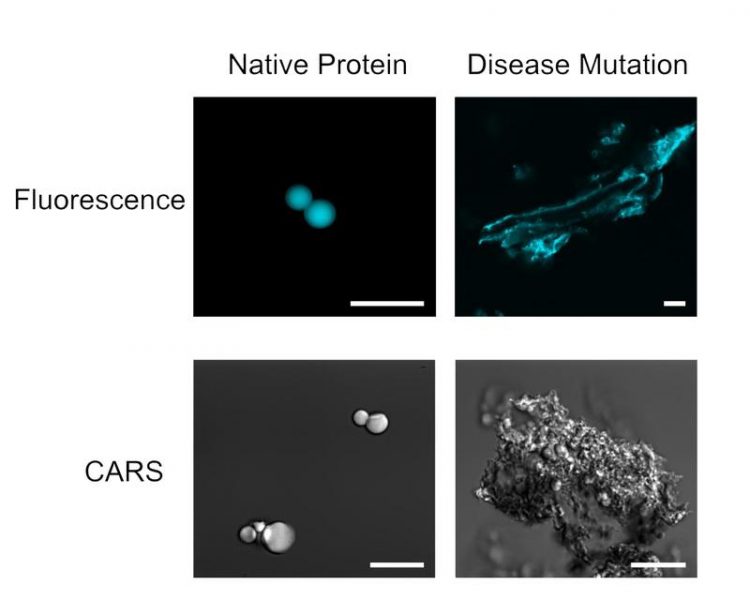Stressing out about granule proteins

Native and disease mutated RNP granule proteins. Scale bar is 20 Native and disease mutated RNP granule proteins. Scale bar is 20μm ©Parekh/MPIP
In the same way that a body contains functional organs, every cell contains functional organelles, each with a specific task. In the cell different organelles are generally separated from the surrounding cellular milieu by membranes or barriers.
RNP (ribonucleotide) granules are an exception: this class of cellular organelles – containing RNA and disordered proteins – that have recently gained much attention, as they are so-called “membraneless organelles” – in contrast to almost every organelle in our cells.
The molecular mechanisms that regulate their formation and stability are only now being elucidated. Moreover, certain mutations in proteins that make up RNP granules lead to known neuropathologies such as amyotrophic lateral sclerosis (ALS), also known as Lou Gehrig’s disease.
The Parekh and Fawzi team will create a novel molecular analytical toolbox and experimental protocols to quantify the protein-protein interactions and structural changes in RNP granules using a multiscale spectroscopic approach: from the single amino acid to whole protein level.
The team will use a combination of in-cell vibrational and FRET imaging combined with in-cell NMR spectroscopy on granule proteins to examine the changes in protein structure and dynamics both in normal and disease-associated mutations.
“We are really excited to bring our different backgrounds to this very interesting and important problem. Our complementary tools will help clarify the molecular interactions that underlie and stabilize native stress granules and their disease mutants. It’s exciting that our project was selected in the highly competitive HFSP process,” said Parekh.
The Human Frontier Science Program Organization (HFSPO) awards some $30 million to support the top 3 percent of grant applications it receives. The 31 winning teams of 2018 were selected from a year-long selection process that started with more than 770 applications. More information on HFSP grants can be found at http://bit.ly/icCsdh.
Media Contact
More Information:
http://www.mpip-mainz.mpg.deAll latest news from the category: Life Sciences and Chemistry
Articles and reports from the Life Sciences and chemistry area deal with applied and basic research into modern biology, chemistry and human medicine.
Valuable information can be found on a range of life sciences fields including bacteriology, biochemistry, bionics, bioinformatics, biophysics, biotechnology, genetics, geobotany, human biology, marine biology, microbiology, molecular biology, cellular biology, zoology, bioinorganic chemistry, microchemistry and environmental chemistry.
Newest articles

Silicon Carbide Innovation Alliance to drive industrial-scale semiconductor work
Known for its ability to withstand extreme environments and high voltages, silicon carbide (SiC) is a semiconducting material made up of silicon and carbon atoms arranged into crystals that is…

New SPECT/CT technique shows impressive biomarker identification
…offers increased access for prostate cancer patients. A novel SPECT/CT acquisition method can accurately detect radiopharmaceutical biodistribution in a convenient manner for prostate cancer patients, opening the door for more…

How 3D printers can give robots a soft touch
Soft skin coverings and touch sensors have emerged as a promising feature for robots that are both safer and more intuitive for human interaction, but they are expensive and difficult…





















